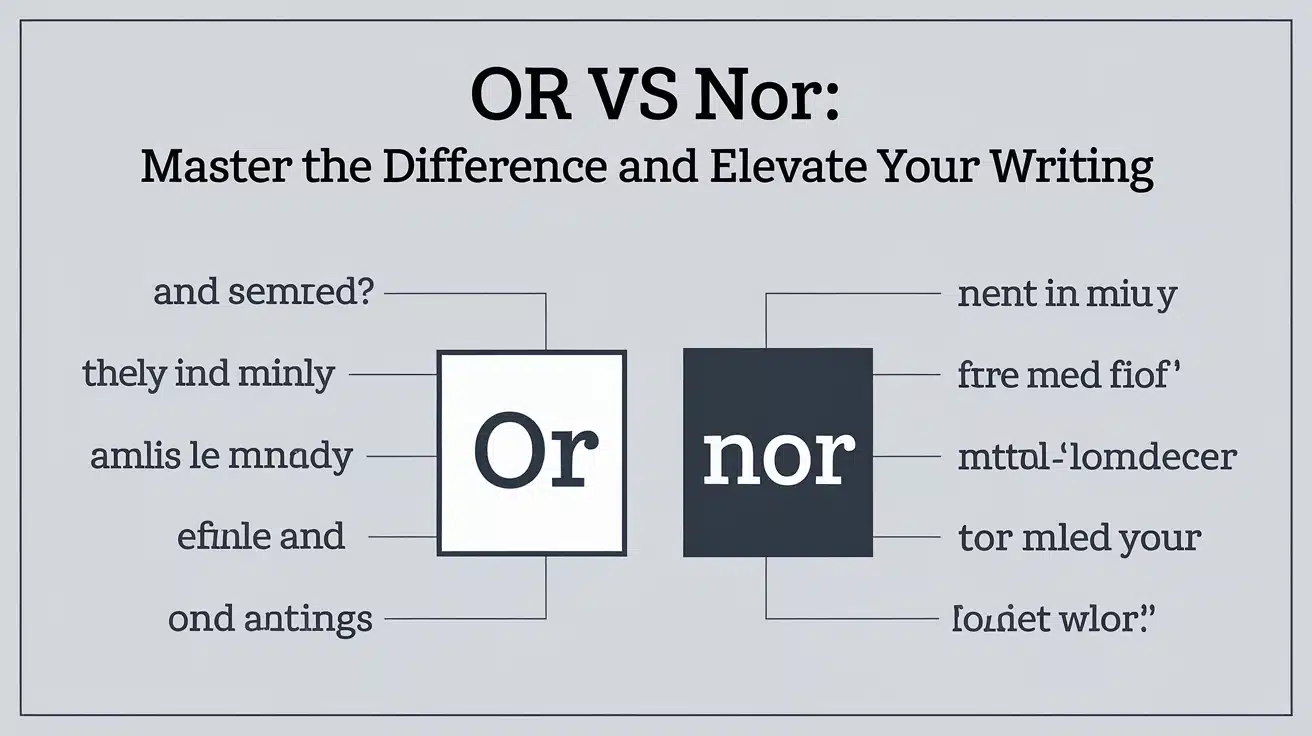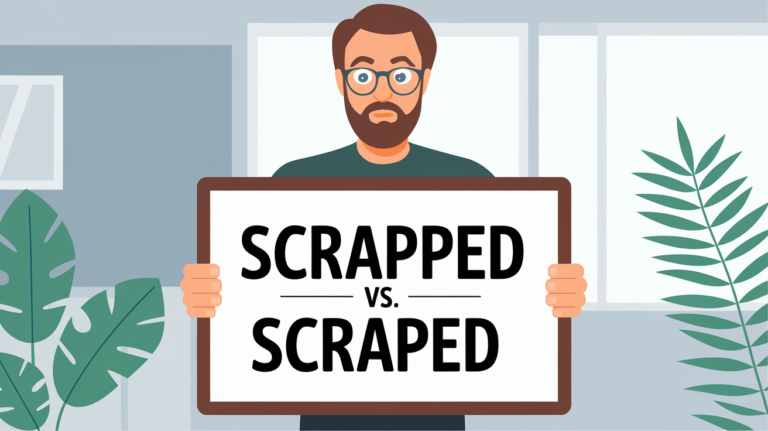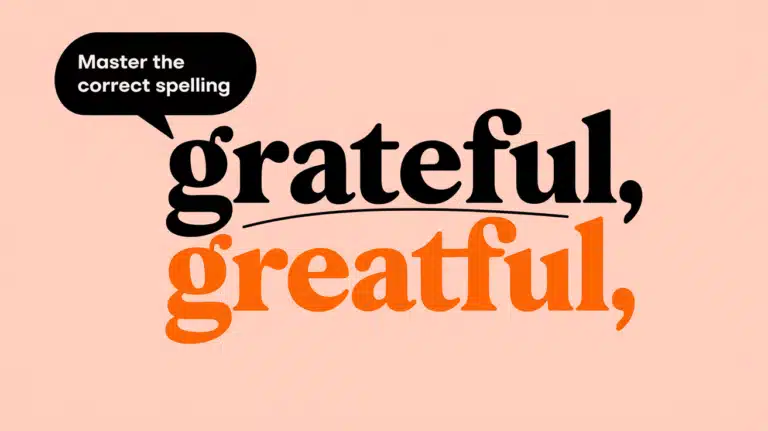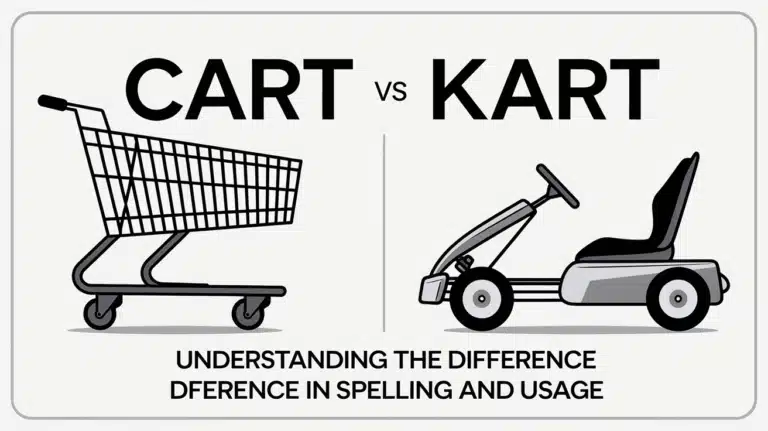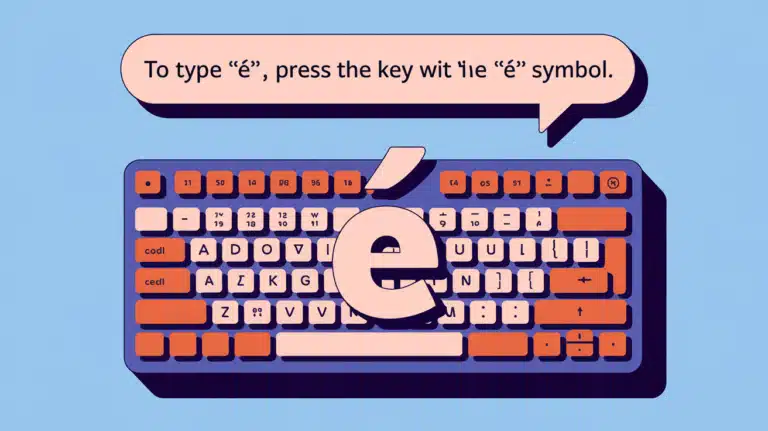Or vs Nor: the Art of Coordination in English
In the vast landscape of English grammar, few elements cause as much confusion as the conjunctions “or” and “nor.” These small words pack a powerful punch, shaping the meaning and structure of our sentences in subtle yet significant ways. Whether you’re a seasoned writer or a language learner, understanding the nuances of or vs nor can elevate your communication skills and help you avoid common pitfalls. Let’s dive into the world of these versatile conjunctions and unravel their mysteries.
The Versatile Coordinator: Understanding “Or”
“Or” is the Swiss Army knife of conjunctions. It’s a tool we reach for when presenting choices, indicating possibilities, or offering conditions. But its simplicity can be deceptive. Let’s break down the various ways we use “or” in sentences:
Presenting Choices with “Or”
When we use “or,” we’re often giving options. For example:
- “Would you like coffee or tea?”
- “You can take the bus or the train to work.”
In these cases, “or” is presenting mutually exclusive options. However, “or” can also present non-exclusive alternatives:
- “For dessert, we have ice cream or fruit. You’re welcome to have both if you’d like!”
Indicating Possibilities Using “Or”
“Or” isn’t just for choices; it’s also for possibilities:
- “The package might arrive on Tuesday or Wednesday.”
- “The noise could be coming from the attic or the basement.”
Here, “or” suggests multiple potential outcomes or explanations.
“Or” in Questions and Conditional Statements
“Or” plays a crucial role in forming questions and conditional statements:
- “Is this item in stock, or should I check back later?”
- “If it rains or snows, the event will be canceled.”
These uses of “or” help create more complex and nuanced communication.
Read More About : Traveler or Traveller: Navigating the Spelling Seas of the English Language
The Negative Connector: Delving into “Nor”
While “or” deals with choices and possibilities, “nor” steps in when we’re talking about negative statements. It’s the go-to conjunction for combining negative ideas or continuing a negative thought.
The Relationship Between “Nor” and “Neither”
“Nor” is often paired with “neither” to form the correlative conjunction “neither…nor”:
- “Neither the cat nor the dog wanted to go outside in the rain.”
This construction is powerful for emphasizing dual negatives.
“Nor” as a Stand-alone Conjunction
Interestingly, “nor” can stand on its own, especially after a negative statement:
- “I don’t like coffee, nor do I enjoy tea.”
Here, “nor” continues the negative sentiment from the first clause.
Or vs Nor: More Than Meets the Eye
Now that we’ve explored “or” and “nor” individually, let’s compare them side by side:
| Aspect | “Or” | “Nor” |
|---|---|---|
| Context | Positive or neutral | Negative |
| Function | Presents choices or possibilities | Continues negative statements |
| Formality | Can be formal or informal | Often more formal |
| Subject-Verb Agreement | Follows closest subject | Inverts subject and verb |
Impact on Sentence Structure
The choice between “or” and “nor” can significantly affect sentence structure:
- With “or”: “Either John or Mary is coming to the party.”
- With “nor”: “Neither John nor Mary is coming to the party.”
Notice how “nor” requires “neither” to precede it in this construction.
Common Mistakes to Avoid with “Or” and “Nor”
Even native English speakers can stumble when using these conjunctions. Here are some pitfalls to watch out for:
- Mixing “or” and “nor” inappropriately
- Incorrect: “I don’t like apples or pears.”
- Correct: “I don’t like apples or pears.” OR “I like neither apples nor pears.”
- Creating double negatives with “nor”
- Incorrect: “I don’t like neither apples nor oranges.”
- Correct: “I like neither apples nor oranges.”
- Forgetting parallel structure
- Incorrect: “She neither called nor didn’t text.”
- Correct: “She neither called nor texted.”
Real-World Applications: “Or” and “Nor” in Action
To truly grasp the difference between “or” and “nor,” let’s look at some real-world examples:
Case Study 1: Legal Writing
In contracts and legal documents, precision is paramount. Consider this clause from a hypothetical contract:
“The party shall not disclose confidential information to any third party, nor shall it use such information for personal gain.”
Here, “nor” continues the negative statement, emphasizing the prohibition on both disclosure and personal use.
Case Study 2: Literary Use
Authors often use “or” and “nor” to create rhythm and emphasis. Take this quote from Shakespeare’s “Hamlet”:
“To be, or not to be, that is the question.”
The use of “or” here presents a fundamental choice, capturing the essence of Hamlet’s dilemma.
The Etymology of “Or” and “Nor”: A Brief History
Understanding the origins of these words can deepen our appreciation for their usage:
- “Or” comes from the Old English “oþþe,” which is related to the Latin “aut.”
- “Nor” is a contraction of “nother,” which comes from “ne other” in Middle English.
This historical context explains why “nor” is inherently negative, while “or” is more neutral.
Digital Age Considerations: “Or” and “Nor” in the 21st Century
In our increasingly digital world, these conjunctions have found new relevance:
Use in Programming Languages
In many programming languages, “or” is represented by the symbol “||” and plays a crucial role in conditional statements:
if (condition1 || condition2) {
// Execute code
}Impact on SEO and Online Writing
When writing for the web, using “or” and “nor” correctly can improve readability and potentially impact search engine optimization. Clear, grammatically correct content tends to perform better in search rankings.
Practical Exercises: Test Your Knowledge
Let’s put your understanding to the test with a few exercises:
- Fill in the blank with “or” or “nor”:
- I don’t like coffee __ tea.
- Would you prefer apple juice __ orange juice?
- Correct the following sentence:
- “He didn’t call or he didn’t text.”
(Answers at the end of the article)
Conclusion: Mastering the Art of Coordination
Understanding the nuances between “or” and “nor” is more than just a grammar lesson; it’s about becoming a more effective communicator. By using these conjunctions correctly, you can:
- Present choices and possibilities clearly
- Express negative ideas with precision
- Enhance the flow and rhythm of your writing
Remember, language is a tool for connection. The more adeptly you wield it, the better you can express your thoughts and ideas.
FAQs
Q: Can “nor” be used without “neither”?
A: Yes, “nor” can be used after a negative statement without “neither.”
Q: Is it ever correct to say “or nor”?
A: No, “or nor” is not grammatically correct. Use either “or” or “nor” depending on the context.
Q: How does “or” differ from “and” in certain contexts?
A: “Or” presents alternatives, while “and” combines elements. For example, “coffee or tea” offers a choice, while “coffee and tea” suggests both are available or required.

